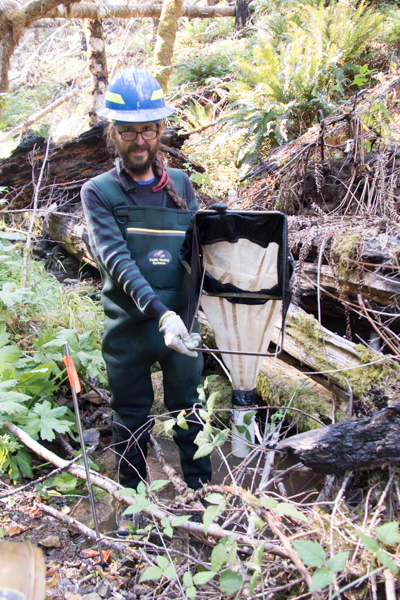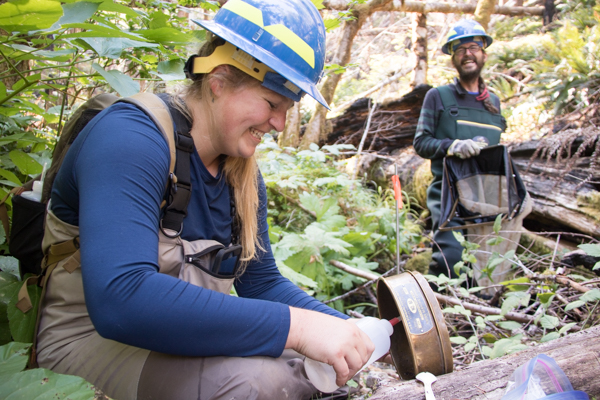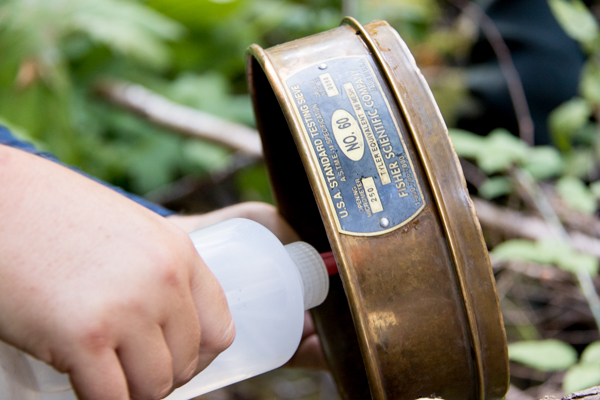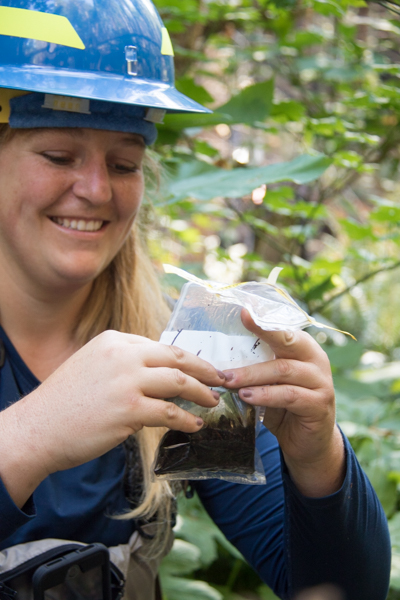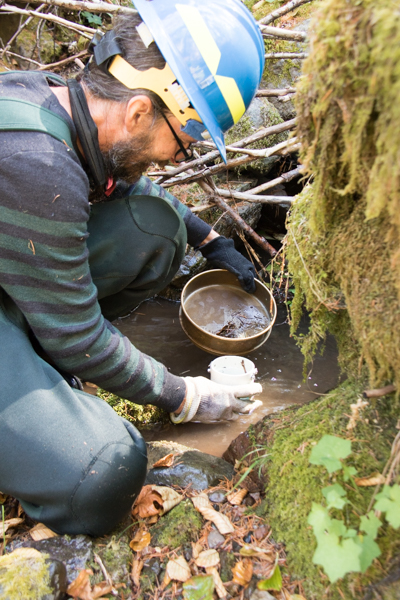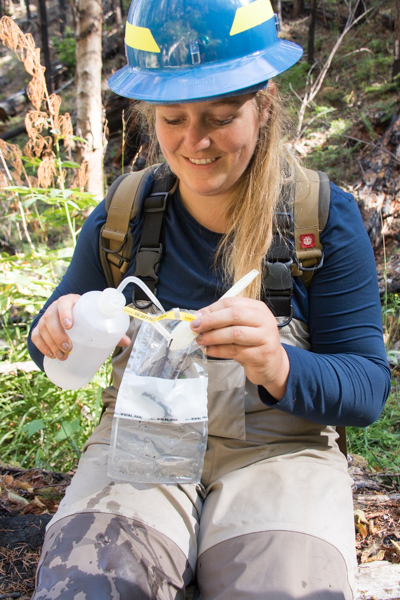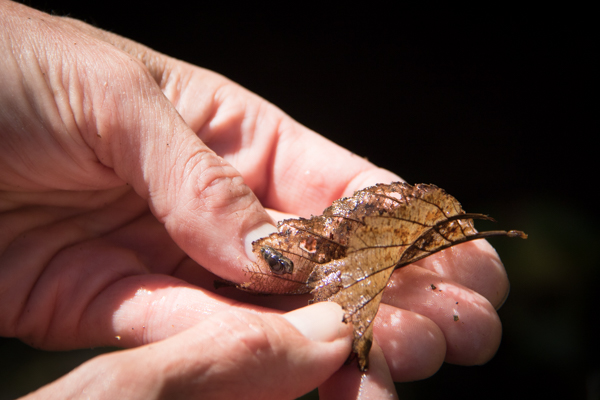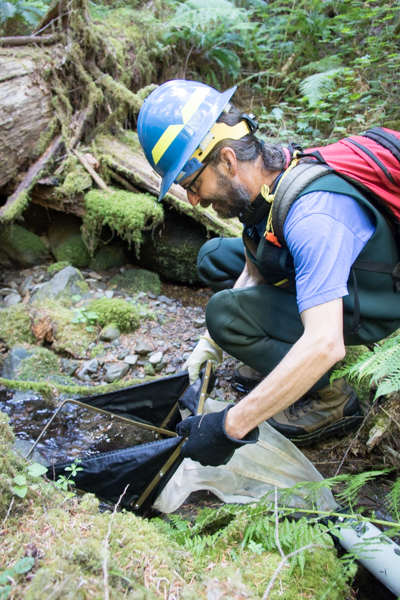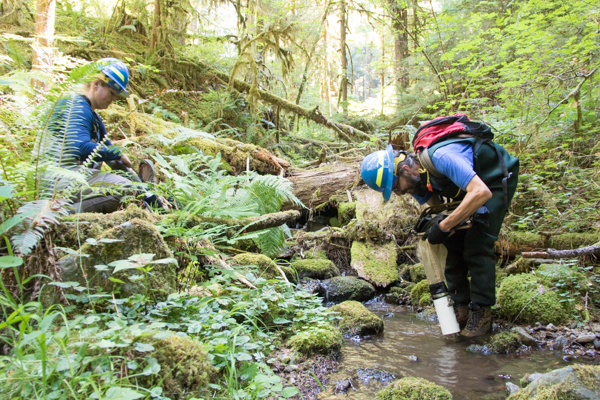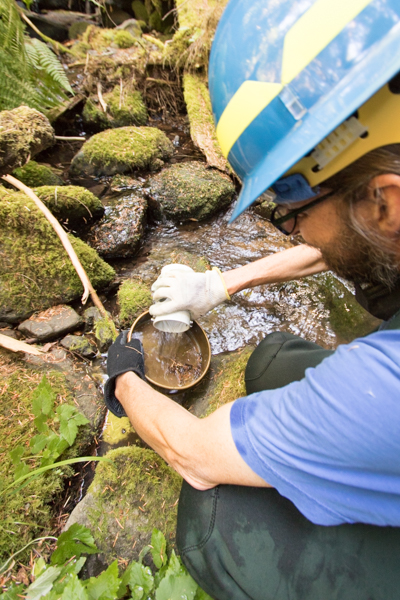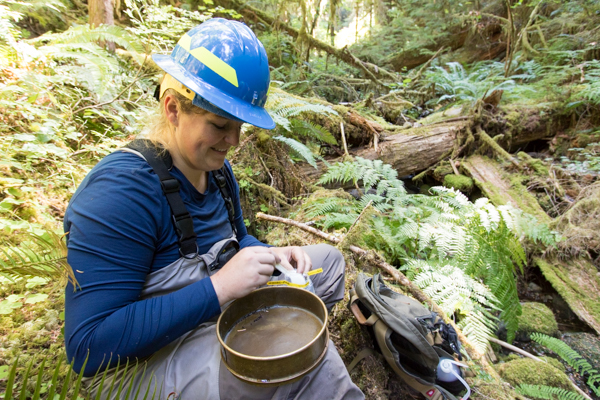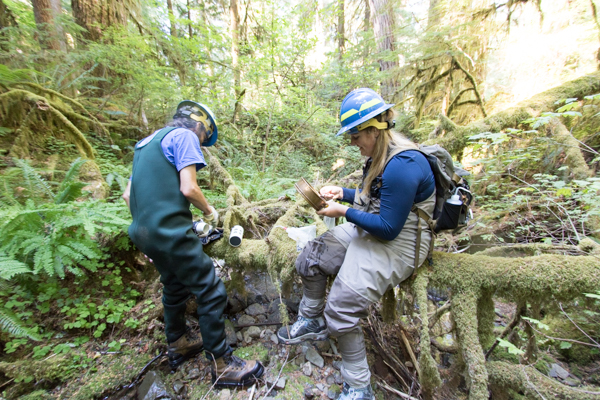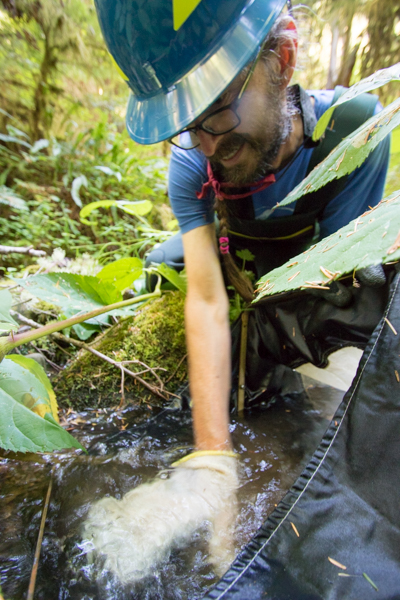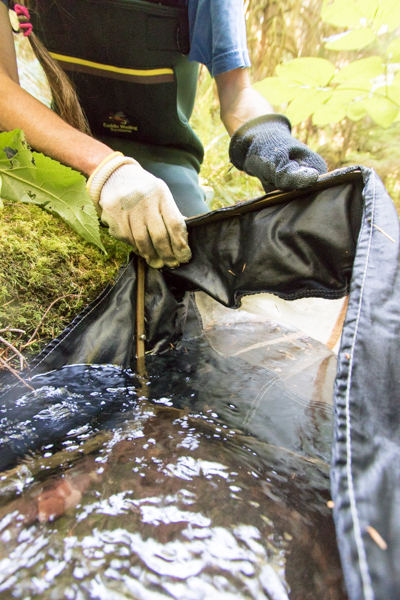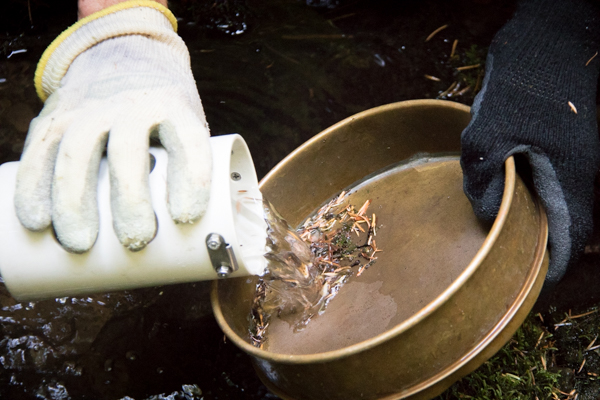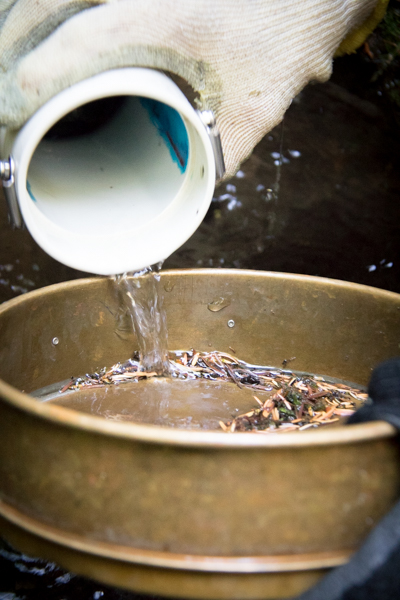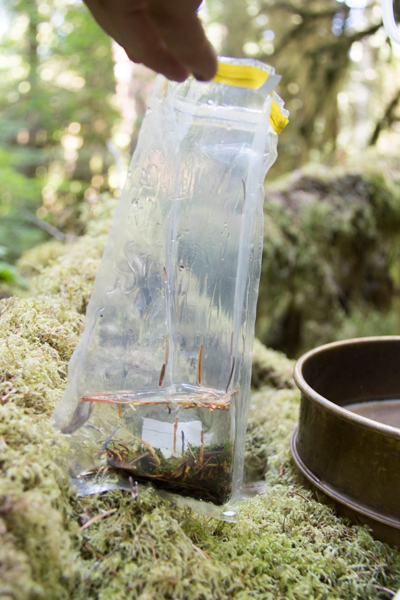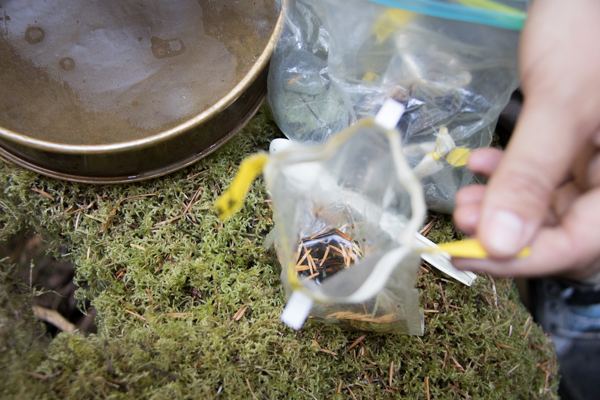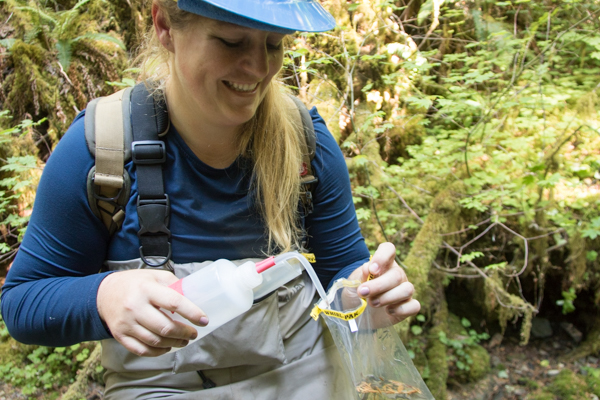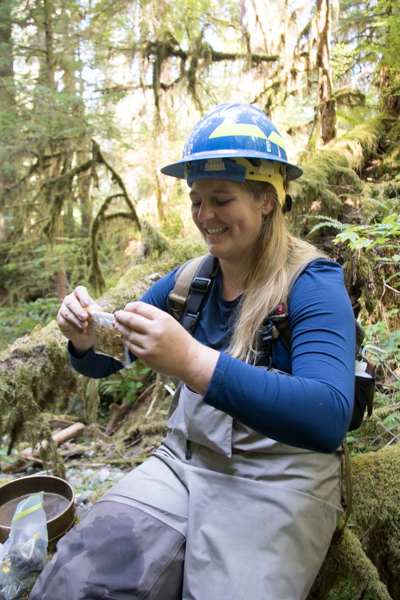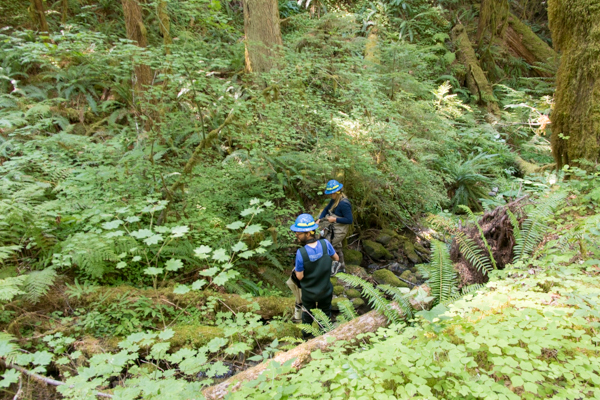OSU Faculty Research Assistant Bill Gerth in Watershed 1 with a Surber sampler, used to collect stream invertebrates
Stream Invertebrate Sampling 2021
Aquatic insects are strong indicators of water quality and stream characteristics. The streams at HJ Andrews Experimental Forest have high diversity of aquatic insects, many of which are only found in cold streams with pristine water quality. Studies of aquatic insects frequently examine the density and community composition of the juvenile or larval stage of insects and compare communities in headwaters to downstream and responses to disturbances (see database- https://andlter.forestry.oregonstate.edu/data/abstract.aspx?dbcode=SA022). Rates and the timing of the emergence of aquatic macroinvertebrates to their final terrestrial stage have also been quantified to explore responses to changing climate and differing stream temperatures (see database - https://andlter.forestry.oregonstate.edu/data/abstract.aspx?dbcode=SA022).
OSU Undergraduate student Meagan White rinses aquatic insects from a sieve, after straining out the water from the Surber sample
OSU Undergraduate student Meagan White displays a preserved sample of aquatic insects collected with a Surber sampler
OSU Undergraduate student Meagan White closing a sample of aquatic insects collected with a Surber sampler
Close up of the netting of the Surber sampler, which collects insects from the stream water
Samples from the Surber sample cup are collected in a sieve
Samples are put into a whirlpack bag where the aquatic insects will be preserved
A tiny aquatic snail on the top left corner of the leaf
A tiny crayfish, at the base of the spoon, is part of the aquatic invertebrate sample
Researchers use a Surber sampler to collect aquatic invertebrates
A Surber sampler is used to collect stream invertebrates
The Surber sample cup is rinsed through a sieve to capture any small aquatic invertebrates
Invertebrates and detrital samples are scooped from the sieve and placed into the sample bag
Researchers in Watershed 2, sampling for stream invertebrates
Researchers in Watershed 2, sampling for stream invertebrates
Researchers in Watershed 2, sampling for stream invertebrates
Streamwater flows into the Surber sampler which catches stream invertebrates
OSU Undergraduate student Meagan White inspects the sample in a sieve
The Surber sample cup is emptied into a sieve
The Surber sample cup is emptied into a sieve
All sample materials from the sieve are washed into the sample bag for preservation. Samples are sorted and insects identified at a later time.
The preserved sample from the Surber sampler, with detritus and stream invertebrates
The preserved sample from the Surber sampler, with detritus and stream invertebrates
Meagan White adds ethanol to the sample bag before sealing it

